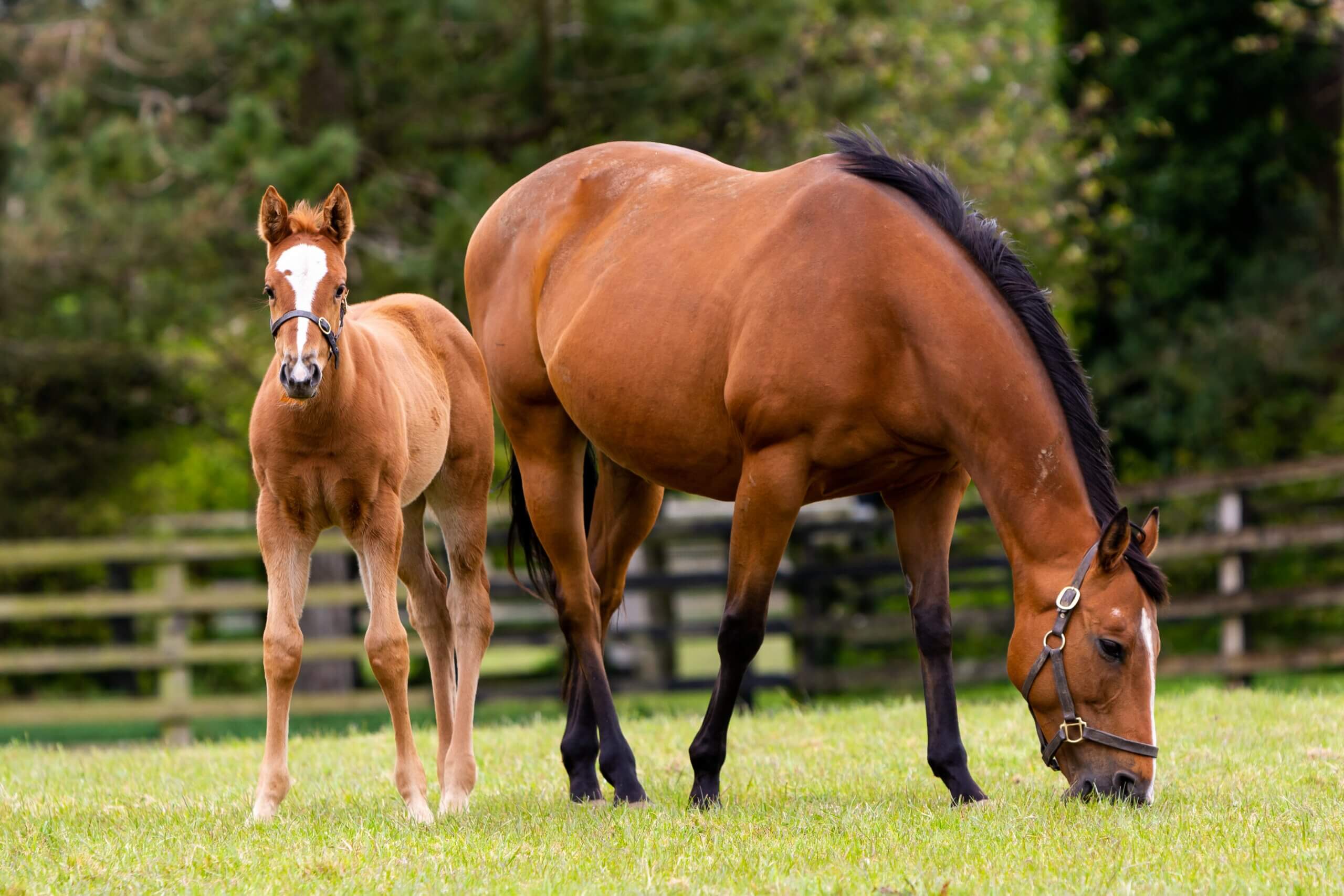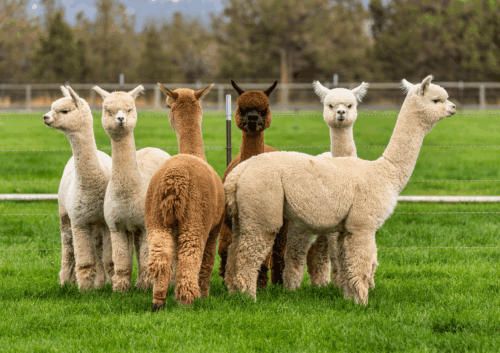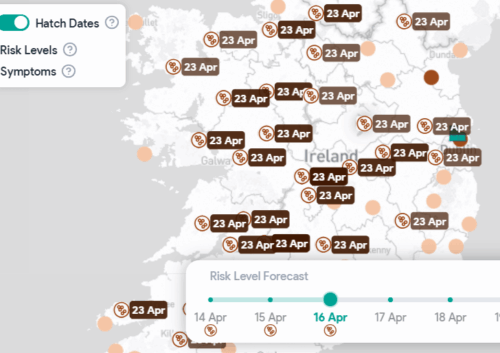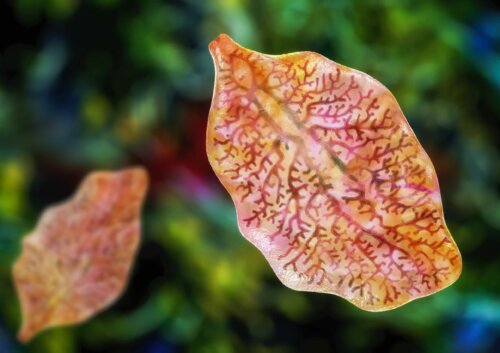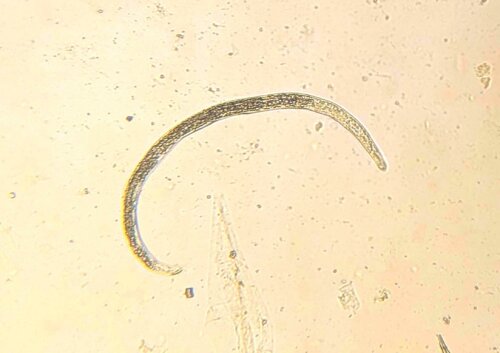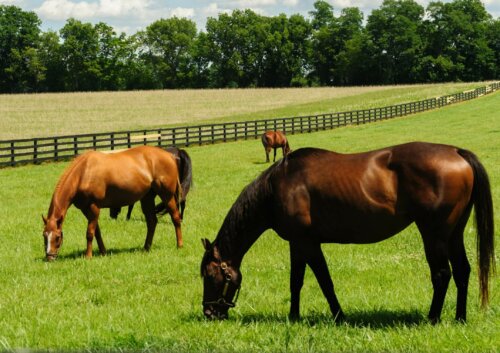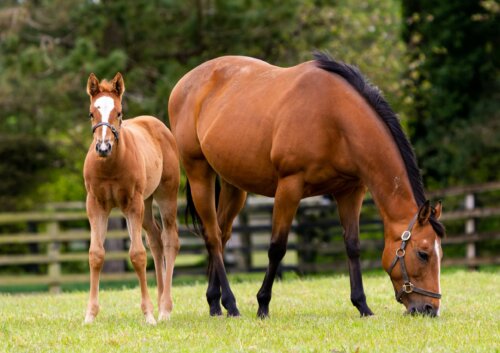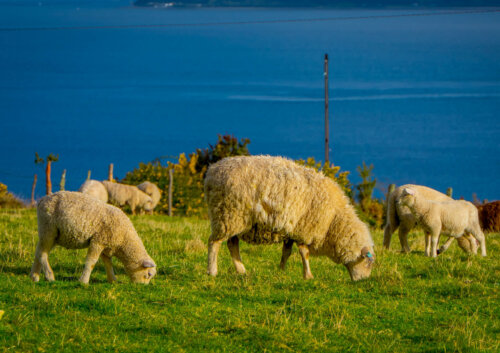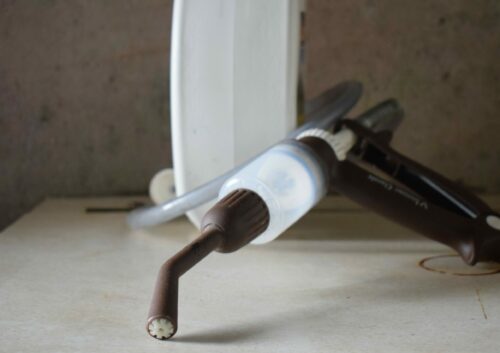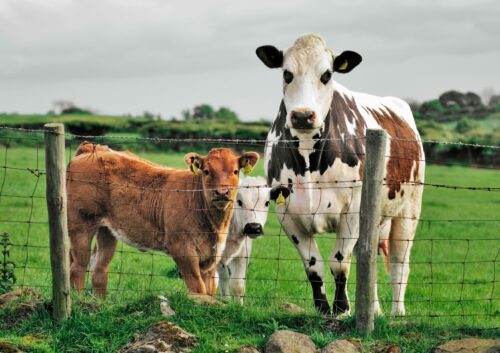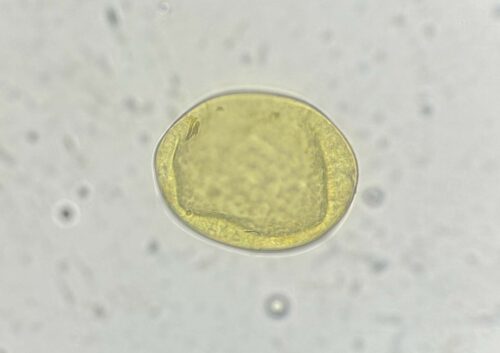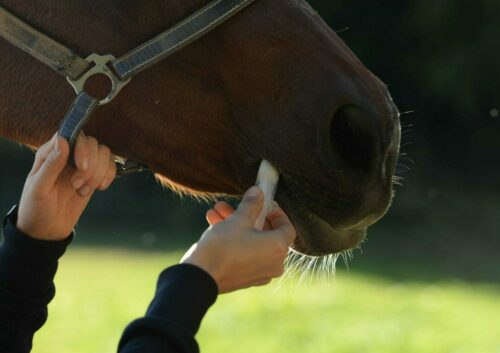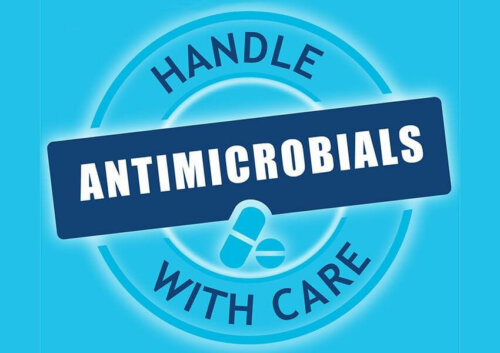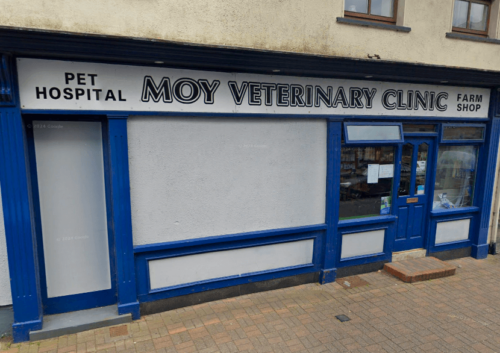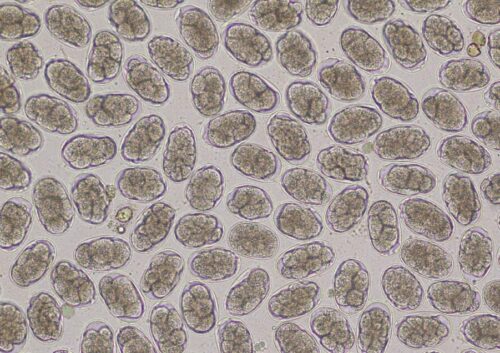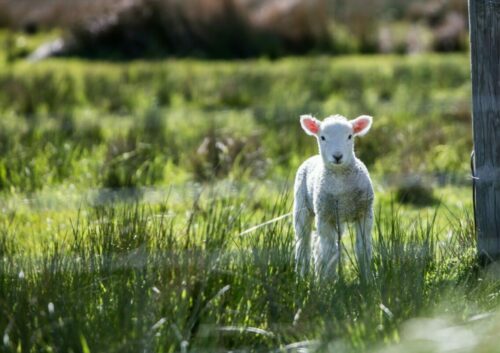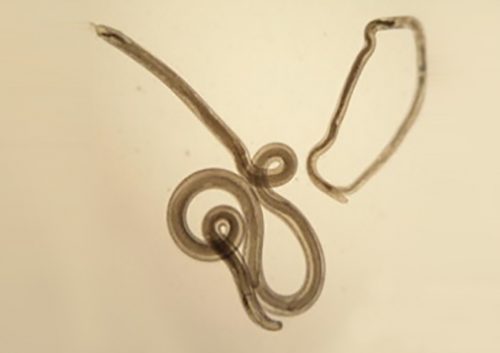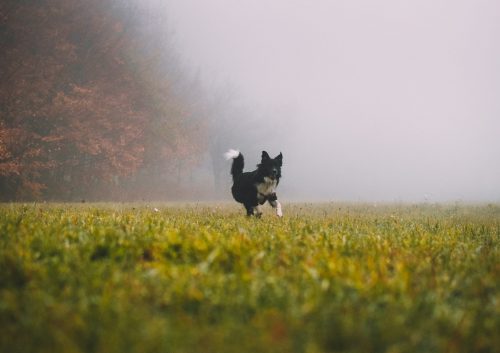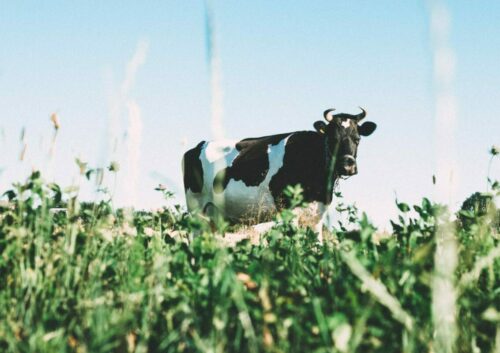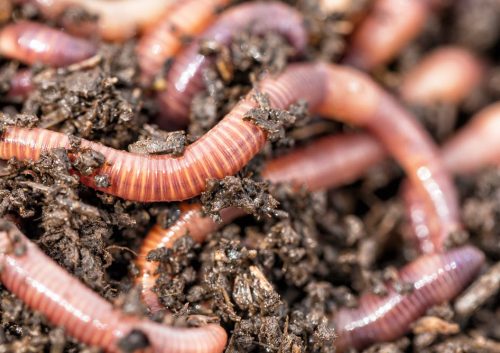As many horse owners know, there are a variety of worms/parasites that can affect the health and performance of your equine animal. This includes gastrointestinal parasites, such as tapeworms (Figure 1), that can infect the digestive system of horses. It is also important to remember the 80/20 rule in regards to these parasitic infections, where 80% of parasitic eggs shed usually only appear from 20% of animals – meaning only small proportions of a group cause the high shedding of worms. In less severe cases of tapeworm infection, some horses can present asymptomatic and have no visible signs of infection. However, in more severe cases, the animal may display a variety of ailments, including but not limited to, ulceration and digestive issues that may arise due to the attachments of the tapeworms to the animals GI tract. In turn, this will decrease the overall health of the animal and potentially cause condition loss, weight loss and anemia. The greatest concern regarding a positive tapeworm infection that presents in high numbers is tapeworm-associated Colic or obstructions. In these situations horse owners may become aware of symptoms, such as signs of pain or distress in their animals, which would require urgent veterinary investigation.
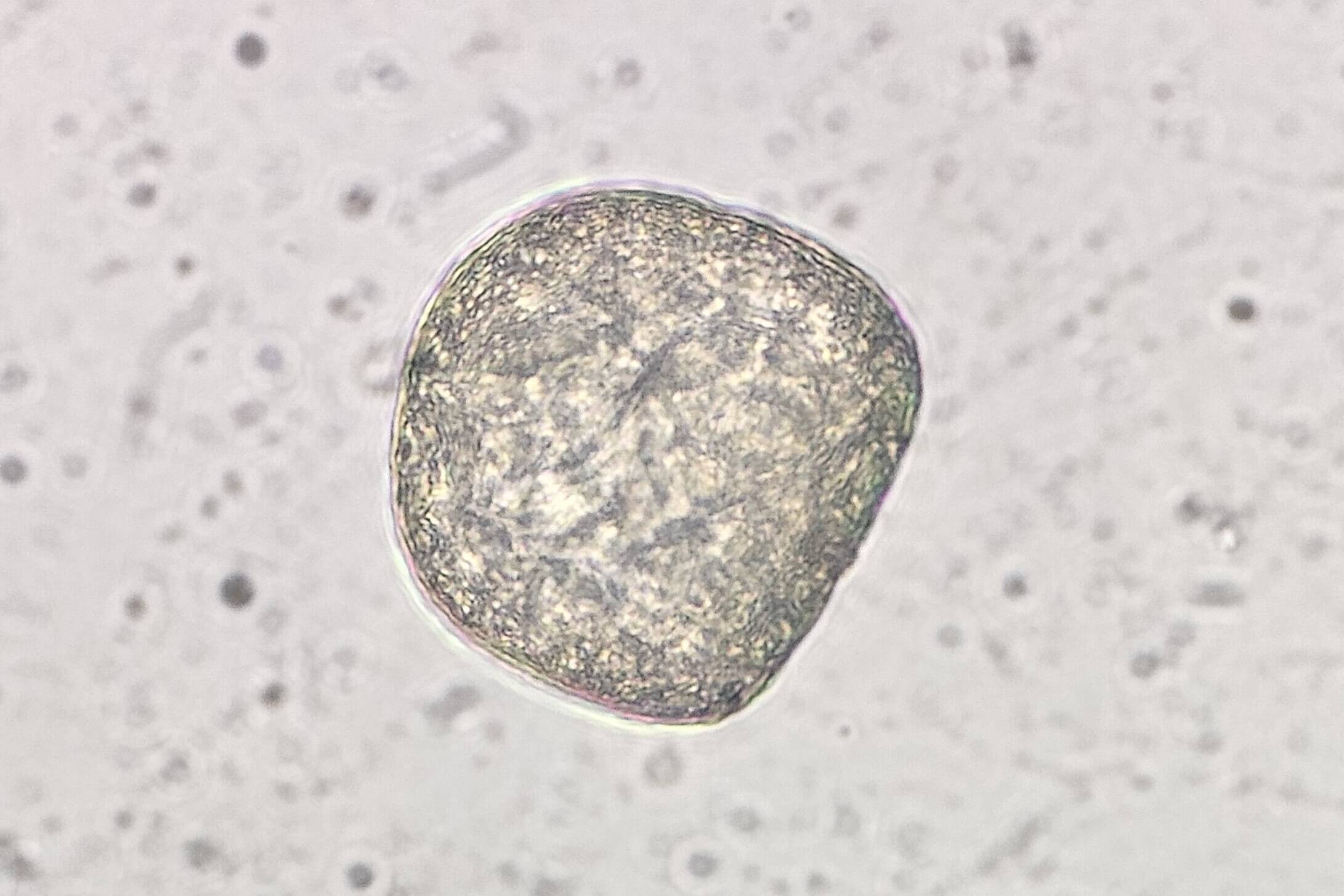
Morphology
Adult equine tapeworm, also referred to as Anoplocephala, are parasitic flatworms that consist of a head, neck and body. The heads have suckers and varying skinfolds/lappets (which are species dependent) that are used to attach to the host. There are three main species, Anoplocephala perfoliata, Anoplocephala magna and Paranoplocephala mamillana.
Anoplocephala perfoliata is the most common of the three species and is the only reported species with clinical impact. Morphologically, this species presents with suckers and back facing skin folds. The mature parasite attaches to the lining of the horse’s cecum and small intestine and can measure approximately 8 cm in length and 1 cm in width. The eggs appear as D-shaped and are approx. 65 to 80 µm in diameter. Anoplocephala magna morphologically presents with suckers and no lappets. The mature parasite worm attaches to the small intestine and can measure up to 80 cm in length and 2.5 cm wide. The eggs appear to be 50 to 60 µm in diameter. Paranoplocephala mamillana or more recently called Anoplocephaloides mamillana, morphologically presents with suckers that point inward and have no lappets. The mature parasite worm attaches to the small intestine and stomach and can measure up to 5 cm in length and 5 mm in width. The eggs appear to be generally oval in shape at approx. 50 to 60 µm in diameter.
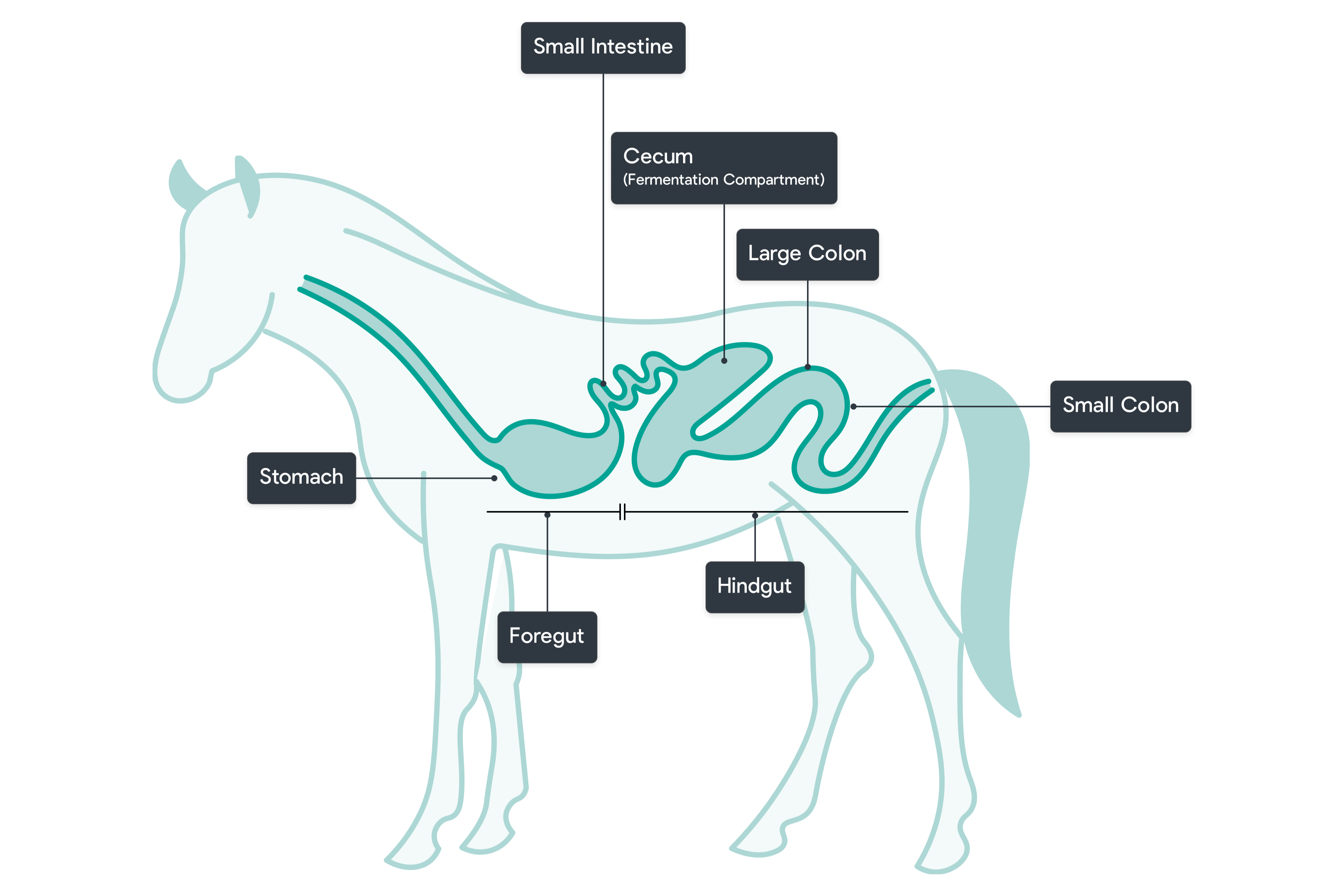
The life cycle of Anoplocephala in horses initiates with the ingestion of a mite by the horse containing the infectious stage of the parasite referred to as the cysticercoid or the larvae stage. Once the cysticercoids are in the host’s gastrointestinal (GI) tract, they can mature into parasite worms and begin to reproduce. The mature tapeworms release eggs into the host which are then passed through the faeces. Mites can subsequently ingest these eggs and continue on the life cycle.
Diagnostics
The diagnosis of a tapeworm infection in equine animals can occasionally be identified using Faecal Egg Count (FEC) testing. This form of diagnosis is considered insensitive as eggs are shed intermittently. Therefore, alternative diagnostics must be used. Other methods include the use of ELISA testing using serum or saliva and testing for the presence of anti-tapeworm antibodies present in the sample.
Treatment of equine tapeworm
Treatment of tapeworm infections are dependent on a number of variables, including the animal’s age, condition, and the overall burden level. Treatment should only be carried out once a test and risk assessment have been performed to confirm the need for treatment. Horses can live healthy lives with a small level of parasite exposure. Therefore, less frequent treatment is recommended to ensure the effectiveness of anthelmintics and maintain parasite refugia.
Refugia is the concept of leaving some internal parasites unexposed to anthelmintic drugs and therefore assisting in management of drug resistance. Refugia can be achieved by various management strategies, including deliberate low contamination of pastures before treatment, light reinfection of livestock from low contamination pastures, targeted selective treatments and leaving approximately 10% of livestock untreated.
Frequent FEC testing and enforcing a management plan can aid in the reduced risk of infection at peak grazing times. All treatment decisions should be discussed with an advisor to ensure a sustainable control plan is followed and no complex interactions occur.
Having an understanding of how Anoplocephala infection may occur, the signs of infection and how best to treat these infections can aid in the management of your
horse’s health to maintain a healthy and thriving animal.
References:
[1] Thomas R. Klei 2019, Gastrointestinal Parasites of Horses, MSD [Internet]. Available from: https://www.msdvetmanual.com/horse-owners/digestive-disorders-of-horses/gastrointestinal-parasites-of-horses#Strongyloides_v43544554
[2] Martin K. Nielsen 2019,Tapeworm-Associated Colic in Horses, MSD. [Internet]. Available from: https://www.msdvetmanual.com/digestive-system/gastrointestinal-parasites-of-horses/tapeworm-associated-colic-in-horses?query=horse%20tapeworm#Diagnosis_v45395389
[3] Sandy Love, Tim S. Mair, 2012 Equine Medicine, Surgery and Reproduction (Second Edition) Science Direct, [Internet]. Available from: https://www.sciencedirect.com/topics/veterinary-science-and-veterinary-medicine/anoplocephala-perfoliata#:~:text=Three%20species%3A,and%20stomach)
[4]University of Saskatchewan 2021, anoplocephala-and-paranoplocephala,[Internet]. Available from: https://wcvm.usask.ca/learnaboutparasites/parasites/anoplocephala-and-paranoplocephala.php
[5] Bimeda, Equimax,Tapeworms – A serious threat to horses in the U.S. [Internet]. Available from: https://www.equimaxhorse.com/parasites/tapeworms-threat
[6] Marta Špakulová, John S. Mackiewicz et al. 2011, Advances in Parasitology, Science Direct [Internet]. Available from: https://www.sciencedirect.com/topics/agricultural-and-biological-sciences/anoplocephalidae
[7] Teagasc 2024, Autumn Equine Internal Parasite Control,Teagasc. [Internet]. Available from: https://www.teagasc.ie/rural-economy/rural-development/equine/equine-health/autumn-equine-internal-parasite-control/
